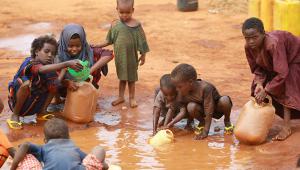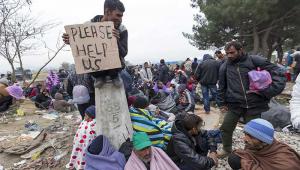Overseas aid fell 2.7% in 2018 on the previous year, with the share heading for the neediest countries going down, the organisation's data indicate.
The drop is being attributed to less aid being spent on hosting refugees as arrivals slowed and rules by which refugee costs come out of aid budgets being tightened.
“This picture of stagnating public aid is particularly worrying as it follows data showing that private development flows are also declining,” said OECD Secretary-General Angel Gurría.
“Donor countries are not living up to their 2015 pledge to ramp up development finance and this bodes badly for us being able to achieve the 2030 Sustainable Development Goals.”
A new way of calculating official development assistance from the 30 members of the OECD’s Development Assistance Committee (DAC) put this at $153bn in 2018, but under the existing methodology used until now it was $149.3bn – down 2.7% on 2017.
Bilateral ODA to the least-developed countries fell by 3% in real terms from 2017, aid to Africa fell by 4%, and humanitarian aid fell by 8%.
ODA outflows fell in 12 countries – in some cases because of fewer refugee arrivals – with the largest declines in Austria, Finland, Greece, Italy, Japan and Portugal.
However, ODA outflows rose in 17 donor countries, with the biggest increases in Hungary, Iceland and New Zealand.
The latest ODA data follows the OECD’s recent Global Outlook on Financing for Sustainable Development which found that foreign direct investment to developing countries dropped by around a third over 2016–17, following a 12% drop in overall external finance from 2013–2016.
The new “grant-equivalent” methodology for assessing ODA that will now be used by the OECD aims to provide a more realistic comparison between grants, which made up 83% of bilateral ODA in 2018, and loans, which were 17%.
“Less ODA is going to least-developed and African countries, where it is most needed. This is worrying,” said DAC Chair Susanna Moorehead.
“This new grant-equivalent methodology is a more accurate and transparent way of measuring donor effort.
“It is also designed to incentivise donors to send the most concessional loans, and more grants, to the countries that need them most.”














